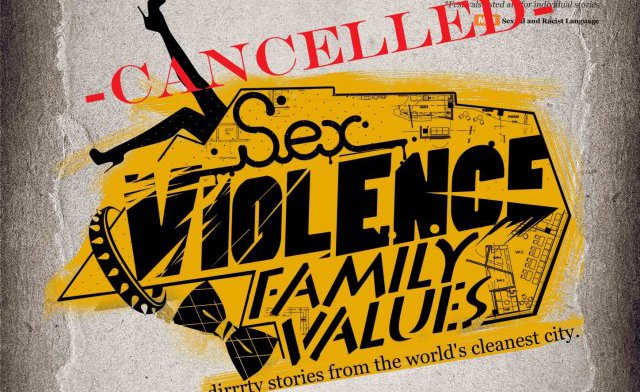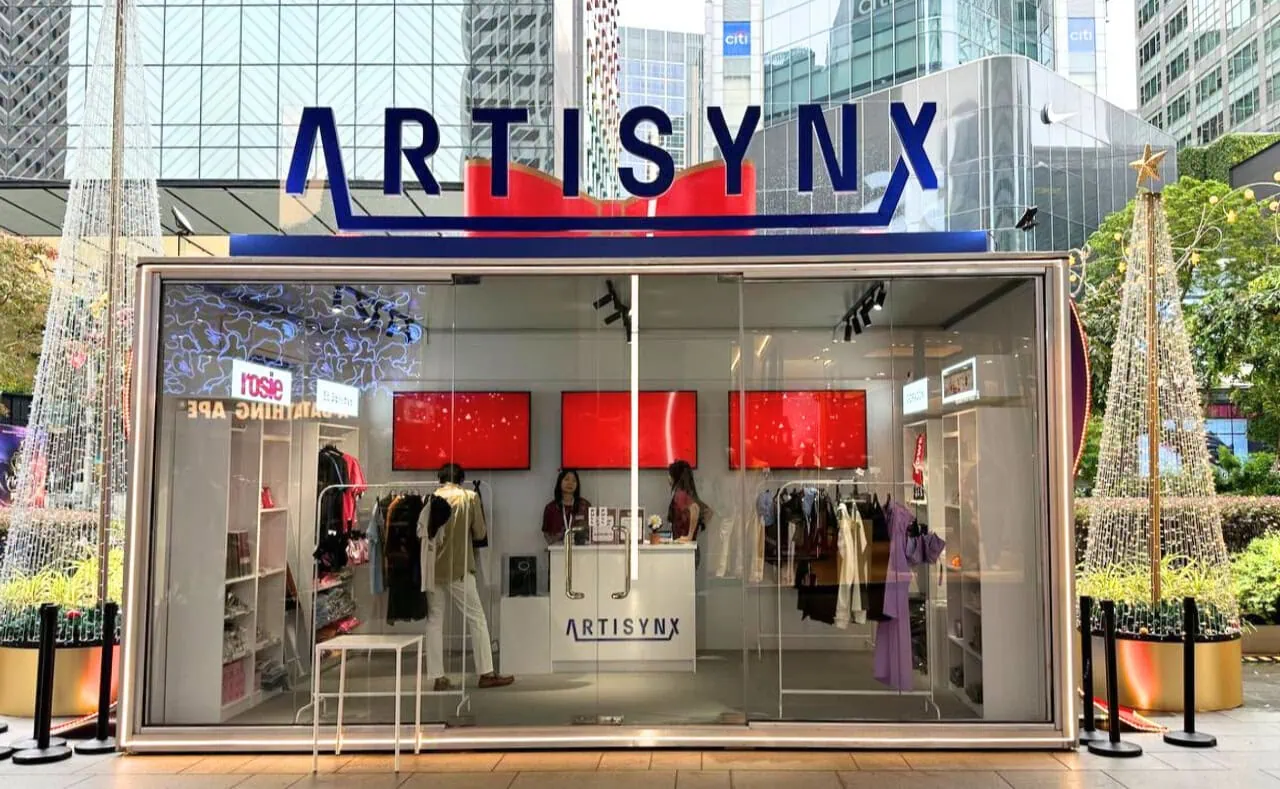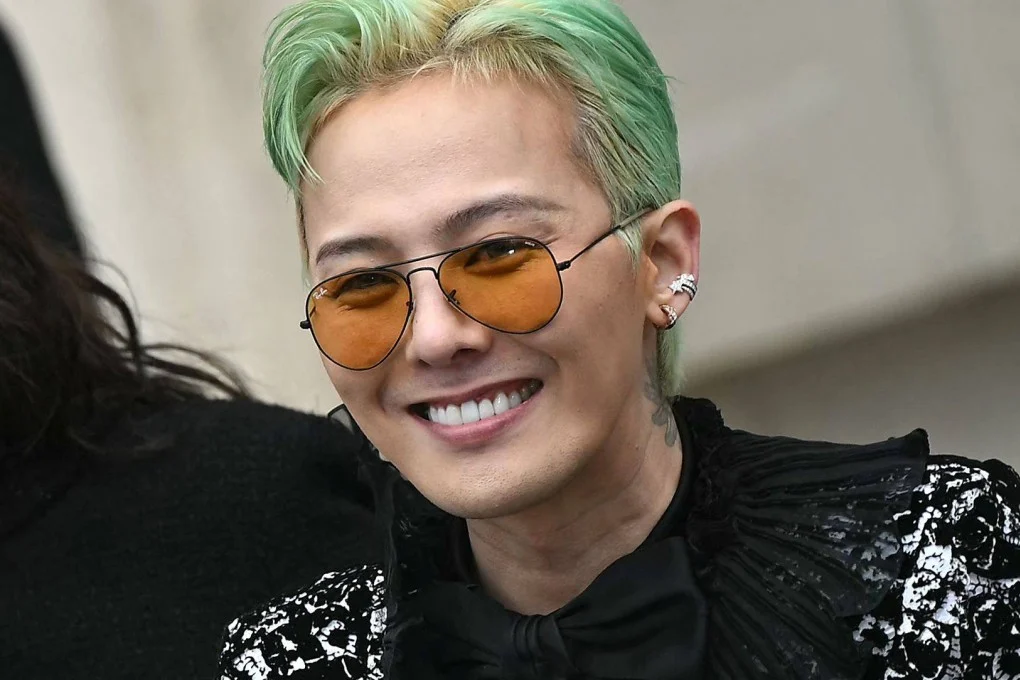It is highly unusual for a film to premiere with all the necessary clearances needed only to be scrapped at the very end. Butter Factory film “Sex.Violence.FamilyValues” directed by Ken Kwek, was banned on Oct 8, just 3 days before it is scheduled to open in cinemas today. The film, originally rated M18 (Mature 18), features three stories of Singaporeans coming to terms with new values and identities in the face of a liberalising Asia. A porn director, a kindergarten student who draws disturbing doodles and a nightclub bouncer who meets a pole dancer are central to the film’s underlying message of tolerance and identity. However, that seems to have gone out of the window, if recent actions by the Media Development Authority (MDA) are to go by.
The Not Allowed For All (NAR) rating was passed by the Films Consultative Panel, with the MDA stepping in to justify the ban “in view of its overt racial references, which are demeaning and offensive to Indians”. inSing News reported that the three separate films had various classifications, but because “Porn Masala” was given the M18 classification (the highest of the three), the compilation movie in total was given that classification. It must be noted that the sexual overtones from The Bouncer were only given the NC16 (Not For Children Under 16) classification and MDA statements did not allude to such scenes being given the NAR axe.
In response, a spokesperson from The Butter Factory released this statement on their Facebook page: “”It is of course disappointing to have our certification revoked at the very last minute. We are considering all options including engaging the MDA further via its appeal process. For those who have purchased tickets to our film, Cathay will be refunding all tickets within the next few days. We apologize for this.” Adrian Pang lashed out at authorities in an interview with Yahoo! Singapore, stating that “it really highlights the sorry state of our TV and film production in Singapore”.
Speculation on social media and comment boards was rife with linking the ban as an after-effect of the Amy Cheong saga, where the former trade union assistant director was fired from that job recently for posting a few racist status updates on her Facebook page. It speaks volumes of a country that vilifies bastions of racism and crucifies their actions at impossibly severe levels but is unable to endure satire on material that serves to mock that same bigotry.
Comments on articles have been mixed with some pointing out how Singapore is not ready for such material and others giving the green light for such satire to come to an increasingly educated population. Therein lies the good ol’ conservative-liberal tussle that many a country have been struggling with. (Barack Obama and Mitt Romney head to the polls November for the 2012 United States presidential elections.) Where does the arts stand across two demographics who serve to protect their own interests? The pervasiveness of Internet personalities known for their no-holds-barred take on Singapore, including Dee Kosh and Noah Yap, has furthered the liberal segment of the population ahead in such topical satire.
However, race has long been seen as a sensitive point of contention. Dee Kosh published a video on July 14, 2012 titled “Drunks“. In the video, he showcases the different types of drunk people one might see in a club, including racial stereotypes such as “Mats” and “Ah Bengs”, all referring to the brasher counterparts of the Malay and Indian populations respectively. The top comment as of October 11, 2012 is by Bernie Ong. He writes “LMAO (laughing my ass off), the indian drunk is damn funny (sic)”. With 41 likes in that said comment, what could have been initially a rude and offensive exercise in affirming stereotypes has become laughable material. A conflated stereotype is just that: a conflated stereotype, stemming from some semblance of truth, but nowhere near what is actually at the front and centre of the group it represents.
It will take a while for a country so hurt by race early on to heal its wounds. Art, being the barometer and challenger of society, will always be at the forefront of pushing ideals that may seem futurist and yet offer a semblance of truth into where a certain group in the population stands. For those like Lionel De Souza who made the police report, a topic like race is a real, dangerous one. However, for Dee Kosh, race is a reminder that reliving Singapore’s racial riots and poking fun at stereotypes are two completely different issues. Whether the ban will be lifted on Sex.Violence.FamilyValues remains to be seen. Frankly, it is not as important as what is at stake here though: if conservative public opinion is one that can accept the seriousness of race (read: Amy Cheong) but the hilarity of racial stereotypes and accusations.
A dismissive population is not an ignorant population. Amy Cheong was, unfortunately, an outlier who clumped both aspects together. The MDA however, seems to have gone to the other extreme with both said aspects. In an art form that pushes extremes, the MDA has become somewhat of an art form in itself.
[vimeo http://vimeo.com/49173497]







